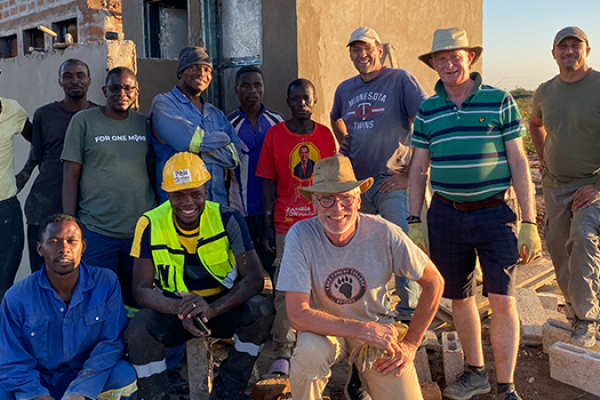Child-to-Child Harm in the Digital Age: Navigating the Four Cs of Online Harm

In an increasingly connected world, the internet has become a vital part of children's lives. From education and entertainment to socialization and creativity, the digital world offers immense opportunities. However, alongside these benefits lies a growing concern: child-to-child harm, particularly within online environments.
Understanding and mitigating child-to-child harm requires examining its various forms and risk factors. Something that can help us with that are the four Cs of online harm: Content, Contact, Conduct, and Commerce. These categories help us as educators and/or parents grasp the full spectrum of risks children may face and potentially impose on one another.
1. Content: Harmful Material Shared Among Children
The first “C”, Content, refers to the exposure to or sharing of inappropriate, harmful, or illegal material. In child-to-child contexts, this includes instances where children share explicit images, violent videos, or engage in "shock" sharing—sending disturbing or offensive content to peers for attention, humor, or revenge.
A growing concern is the exchange of sexually explicit material, often referred to as sexting, among teenagers. While often consensual initially, these images can be distributed without consent, leading to reputational harm, bullying, and even legal consequences. Younger children might not fully grasp the implications of sharing such content, highlighting the role of digital literacy and ethical education.
Additionally, peer-shared content can contribute to cyberbullying, including the circulation of hurtful memes, manipulated photos, or exclusionary posts designed to shame or isolate classmates. Even content that appears harmless—such as viral challenges or dares—can promote harmful behavior, especially when these trends involve risky, dangerous, or self-destructive actions. The social pressure to participate or conform can exacerbate the negative impact on young individuals' mental health and well-being.
2. Contact: Dangerous Peer Interactions Online
Contact refers to the risk of children being approached by or interacting with others in ways that are exploitative or inappropriate. While much focus has been on adults contacting children, peer-to-peer contact can be just as damaging, particularly when it occurs in unsupervised digital spaces like gaming platforms, messaging apps, or anonymous forums.
One common and deeply concerning form of harmful online contact is grooming, which can even occur between children. This happens when one child manipulates another into engaging in sexual conversations or activities. A power imbalance—whether in age, maturity, social status, or awareness—can significantly increase a child’s vulnerability to such exploitation.
Group chats and forums can also facilitate exclusion, harassment, or piling on, where a child becomes the target of coordinated messages or abusive comments from peers. In some cases, fake accounts are created to impersonate or mock classmates, further blurring the line between digital and psychological harm.
3. Conduct: Harmful Behaviors Perpetrated by Children
Perhaps the most direct form of child-to-child harm is related to Conduct—the way children behave online. This includes cyberbullying, trolling, harassment, spreading rumors, and sharing non-consensual images or information. Unfortunately, many of these behaviors are normalized within some youth online cultures, making intervention more complex.
Cyberbullying has a particularly damaging psychological impact, especially when compared to traditional bullying. The 24/7 nature of the internet, combined with anonymity and a potentially unlimited audience, can intensify feelings of isolation, shame, and anxiety in victims. The perpetrators, often peers or classmates, may not fully understand the consequences of their actions or may be acting out of peer pressure or emotional issues of their own.
Children can also be both experiencing harm and causing harm, further complicating the issue. A child bullied at school may retaliate online against others, setting off cycles of harm that can spread across platforms and communities.
Moreover, conduct-based harm sometimes involves coercive behavior in relationships, where one child pressures another into sharing images or engaging in inappropriate conversations. This can evolve into blackmail or threats of exposure, often referred to as sextortion—a serious and growing issue among teens.
4. Commerce: Exploitation Through Digital Transactions
The final “C”, Commerce, reflects how commercial aspects of the digital world can facilitate harm among children. Though often overlooked in discussions about peer harm,
commerce-based risks include in-app purchases coerced by peers, scams conducted by children, or digital extortion.
For example, a child might be tricked or pressured by peers into spending money on games or sharing passwords that lead to unauthorized purchases. More tech-savvy children may even engage in deceptive behavior, such as phishing friends or exploiting in-game mechanics to gain financial advantage over others.
Another concerning trend is the rise of peer-run black markets on platforms like Discord or TikTok, where children sell access to explicit images, cheat codes, or illicit content. These transactions can contribute to a cycle of exploitation and encourage children to engage in illegal or unethical behavior to earn status or money.
How can we respond?
Preventing and addressing child-to-child harm requires a collaborative, proactive approach. Parents and schools must work together to:
Be role models: Children learn through example. Adults should strive to reflect Jesus in their interactions both offline and online. Demonstrating respectful digital behavior—marked by kindness, integrity, and compassion—sets a powerful standard for young people to follow.
Promote digital literacy and resilience: Equip children with the knowledge to recognize and resist harmful content, contact, and behaviors. Adults need to learn too, so they can guide and support their children effectively.
Encourage open communication: Create safe spaces where children feel comfortable discussing their online experiences, knowing they can turn to trusted adults for support.
Foster a positive peer culture: Schools and communities play a vital role in promoting empathy, respect, and accountability among children. Regular safeguarding training should also be provided to build awareness and resilience.
It’s important to recognize that not all harmful behaviors are malicious; many stem from immaturity, imitation, or a lack of understanding. This does not mean consequences should be avoided—children need direction and boundaries—but rather that consequences should be delivered alongside appropriate guidance, support, and intervention. When a child causes harm, they may be experiencing harm themselves and need support. A trauma-informed approach ensures that responses consider the
underlying factors influencing a child's behavior—whether the child is causing harm or being harmed—and prioritizes healing, accountability, and long-term well-being.
Conclusion
Child-to-child harm in digital spaces is a growing concern that mirrors broader societal issues of bullying, abuse, and exploitation—but in a landscape that is constantly evolving and harder to monitor. The four Cs of online harm—Content, Contact, Conduct, and Commerce—provide a framework for understanding the types of risks children face and pose to one another.
As TeachBeyond members, we are privileged to play a role in reaching the nations through education. In this calling, we strive to reflect and glorify Jesus in all we do—upholding each child's God-given right to dignity, respect, and love. By recognizing and addressing child to child harmful behaviors with grace and truth, we can better support children as they navigate today’s world and help them flourish into the individuals God created them to be.



